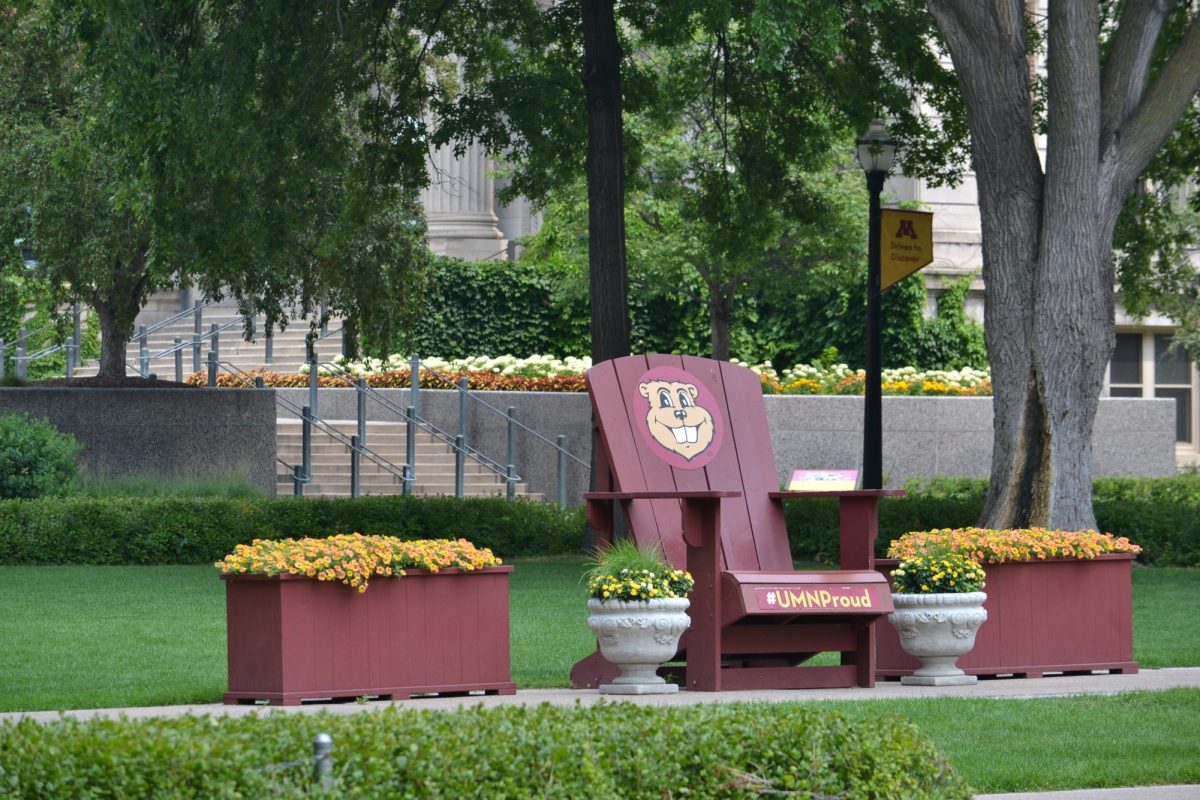The multi-year drought the Twin Cities metro area is experiencing has placed strain on the resources of the University of Minnesota Landcare staff, calling for a priority shift in campus lawn-care maintenance.
Despite the seemingly pristine appearance of University grounds, Hennepin County has been in an extreme drought for several months. Extreme droughts typically manifest via major crop and pasture losses and widespread water shortages or restrictions, according to the Minnesota Drought Monitor.
University of Minnesota Assistant Director of Landcare Tom Ritzer said that while droughts are a natural phenomenon, he and his team have little experience dealing with a drought of this severity.
Ritzer said the drought’s severity has not necessarily required more manpower but pushes University Landcare staff to reprioritize tasks. Landcare staff has responded to the lack of water by increasing hand-watering, replacing plant materials, mulching and weeding.
“We have a lot of trees. We have a lot of shrubs, and perennials for that matter, that were planted in the last couple of years, and they’re stressed from lack of water, so there’s a lot of hand watering going on,” Ritzer said.
These tasks require additional labor, a resource the University Landcare department has lacked in recent years.
“Traditionally, we relied pretty heavily on student labor, but for the last few years, we’ve really struggled to get students to come and work for us,” Ritzer said.
The University is working to stay eco-friendly by transitioning to more native materials, alternative turf varieties and specialized irrigation systems, Ritzer said in an email statement. Though these materials still require water to function, they are more drought-tolerant.
Isabella Hurt, a sustainability student at UMN, said practicing sustainability in University lawn maintenance is important to her because it is the root of a larger solution.
“The sustainability of our landcare practices is so important because it all has to start from somewhere,” Hurt said. “All the little pieces that we have to work on as a group of people. The easiest way to do that is start with the small things.”
Peter Boulay, assistant state climatologist for the Minnesota State Climatology Office, said despite the recent increase in rainfall, we are still experiencing a dry year.
“The Twin Cities are still about 4.5 inches shorter than normal right now for the year,” Boulay said.
Boulay added the steep increase in rain the Twin Cities Metro had in September set the area back on track regarding normal rainfall patterns for the month.
“For September at least, we’ll finish above normal. In the Twin Cities, we’ve had 4.05 inches of rain,” Boulay said. “The normal precipitation is 3.02. So we’ll finish at least an inch above normal for the month, and that’s the first time we’ve finished above normal for a month since March.”
According to Boulay, with the ever-changing nature of rainfall patterns, it is difficult to say whether this pattern will have long-term effects.
“We’re no stranger to these kinds of events either. Getting three inches of rain over a multiple-day period, it certainly happens. And you know, it just depends on the weather pattern we have,” Boulay said. “We’re just missing out on the storms over the summer. It’s hard to tell if this pattern will change or not. I guess we’ll just have to keep an eye on it and see what happens.”














